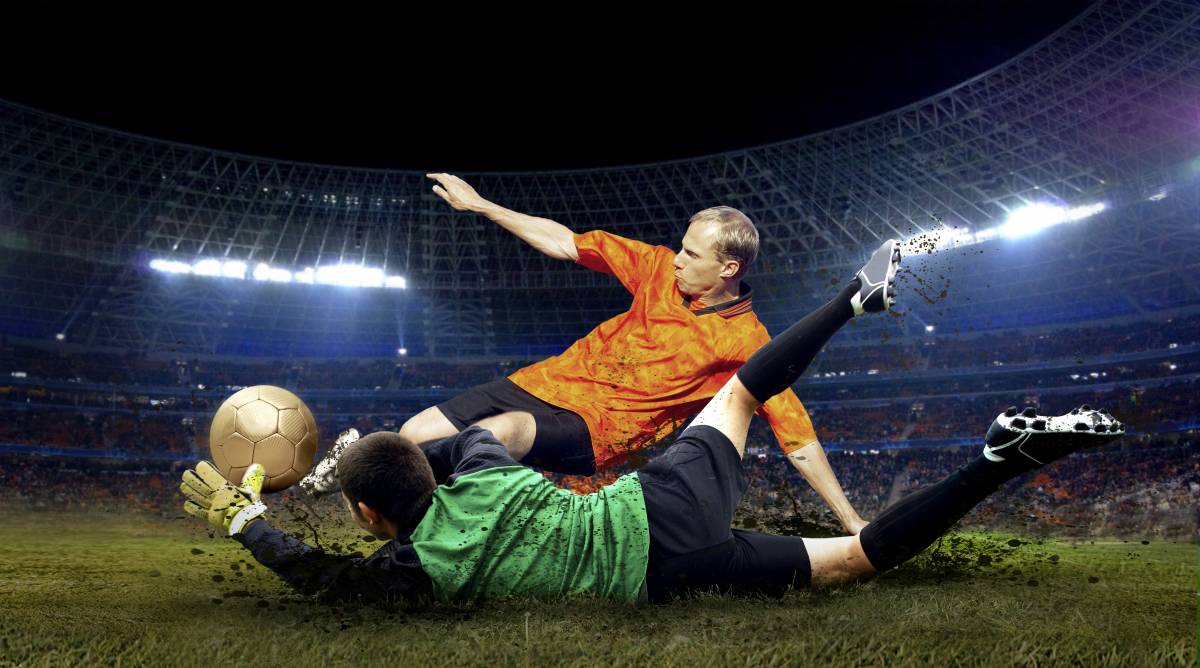Attempts to limit heading among professional footballers may be 'politically driven', says physio
A recent bid to limit the amount of heading in football training sessions in England may be ‘politically driven’ and is not evidence-based, an article that was co-written by Poole-based physiotherapist Osman Hassan Ahmed has suggested.
The editorial, which appears in the latest edition of the British Journal of Sports Medicine, says there is a dearth of high-quality research into possible links between heading and the development of long-term neurodegenerative diseases – despite suggestions to the contrary in the media.
Dr Ahmed, who works at the department of physiotherapy at University Hospitals Dorset NHS Trust, the School of Sport, Health and Exercise Science at the University of Portsmouth, and The FA Centre for Para Football Research in Burton-upon-Trent, is one of six authors who collaborated on the paper.

Calls to limit or even ban heading completely based on public health 'precautionary principles' are also not scientifically supported, may be politically driven, and must be balanced against the impact on participation rates of a heading ban [Joseph Evans et al.]
Political drivers
The team points out that the English FA responded to mounting pressure to limit head-to-ball contact by issuing guidance covering professional men’s and women’s football last year. These restricted the number of headers during training to a maximum of 10 high-force headers in a week per player (match headers were not included because they were deemed ‘non-modifiable’). Clubs may have to audit their own heading practices against these new heading guideline standards, the authors point out.
Though research has been conducted into rates of dementia and long-term neurodegenerative diseases among former players in Scotland, ‘considerable methodological challenges’ remain, they claim. ‘Calls to limit or even ban heading completely based on public health “precautionary principles” are also not scientifically supported, may be politically driven, and must be balanced against the impact on participation rates of a heading ban, as well as the numerous health, social and possibly economic benefits of playing football regularly.’
Goalkeeping issue
The authors point out that ‘falls to the ground’ – something that is a particularly common occurrence among goalkeepers – also ‘transmit forces to the brain’ and may be worth trying to evaluate in the future, despite the challenges of doing so.
‘Objective measurement is needed to quantify and characterise all head impacts in football. Enhanced understanding will only evolve from the development of validated, practical, objective methods for quantifying headers based on impact, force and load on the brain.’
Coach influence
When a validated objective measure of heading load is available, an educational programme for coaches may be needed to ensure the number of headers is limited in training sessions, recognising links between coaching styles and injury. 'Recent literature on amateur youth football highlighted a limited awareness of heading guidelines, with 60 per cent of staff directly involved in training of players lacking appropriate knowledge of the guidelines, the authors note.
Heading for a better future?
Future versions of heading guidance will need to be more sophisticated, the authors conclude. ‘Consensus on measurement of heading exposure in football is needed and will require significant resources and technology for objective measurement if the potential risk is to be better understood and mitigated.'
To view the article, titled How many headers are too many? Evolving our understanding of heading in English professional football, visit: http://dx.doi.org/10.1136/bjsports-2022-105770
Author: Ian A McMillanShare it with














